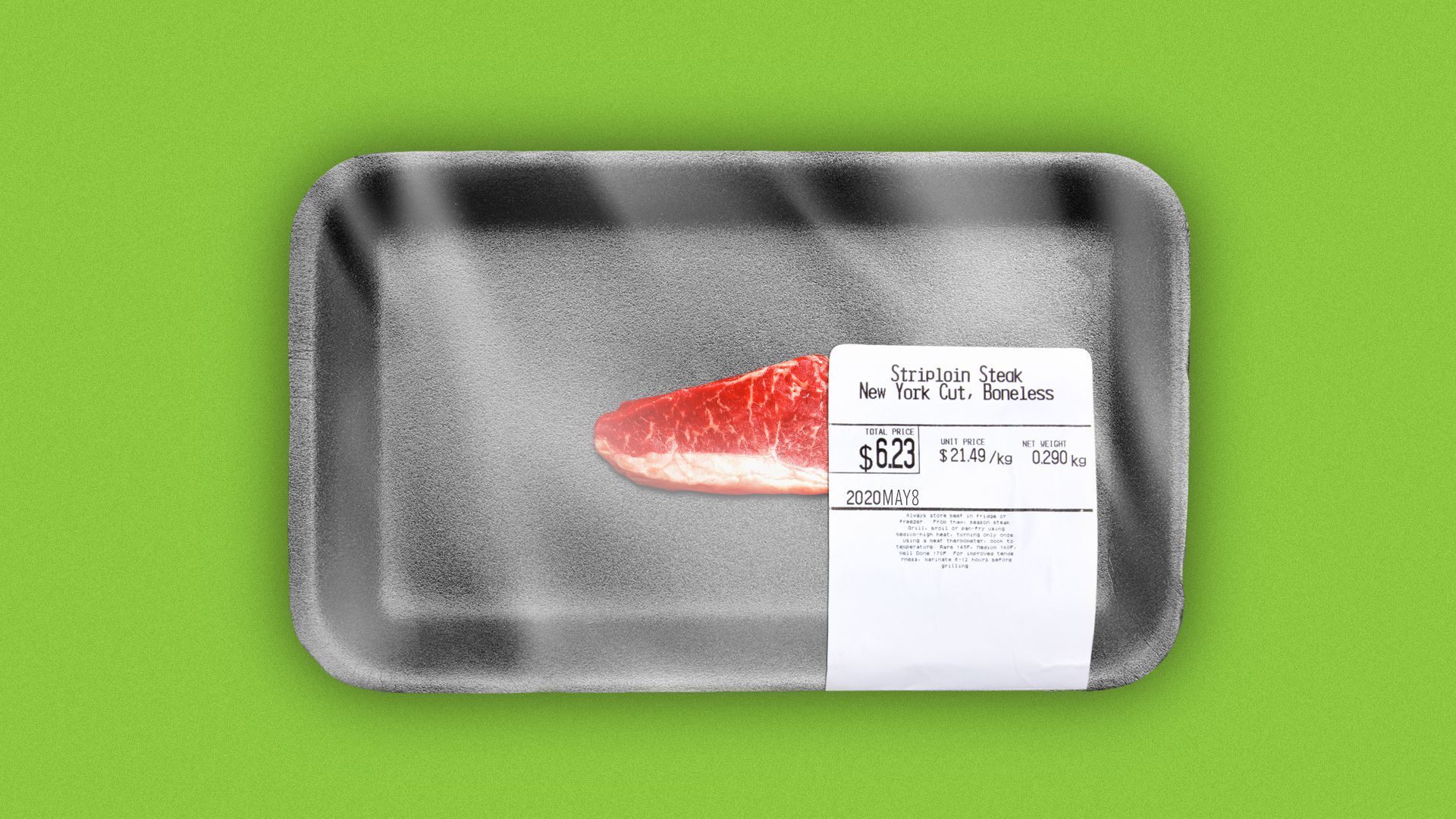| | | | | | | | | | | Axios Markets | | By Matt Phillips and Emily Peck · Apr 25, 2022 | | 🎩 Ah! Sir, madam. Welcome. Do have a seat on the leather settee beside the hearth. Care for anything? Tea? Cigar? Some laudanum, perhaps? ... ... We're traveling back in time to the Gilded Age to examine the parallels between Elon Musk's bid for Twitter and an episode few besides historians have thought about for 140 years. Today's newsletter, edited by Kate Marino, is 1,129 words, 4.5 minutes. | | | | | | 1 big thing: Elon Musk and the ghost of Jay Gould |  | | | Photo illustration: Shoshana Gordon/Axios. Photos: Hulton Archive, Buyenlarge, Maja Hitij, Bettmann, Patrick Pleul/Picture Alliance via Getty Images | | | | A powerful 1%-er launches a takeover bid for a seemingly irreplaceable communications network, igniting a panic over the power of the super-rich, Matt writes. The intrigue: No, not Elon and Twitter. We're talking about the notorious Gilded Age financier Jay Gould — who for over a decade starting in 1881 controlled nearly all America's telegraph wires. Driving the news: Multiple reports over the weekend suggested the company was reexamining Musk's offer after the tech icon detailed some of the financial plans to pay for the deal. Why it matters: While nearly forgotten today, the Gould episode has remarkable parallels to Musk's attempt to seize control of Twitter, putting the current era of American capitalism in stark relief. TL;DR: Gould was a shrewd upstate New Yorker who had already made multiple fortunes — in the railroad industry and on Wall Street — when he set his eye on wresting control of Western Union. The company had a near-monopoly over the U.S. telegraph system, controlling 90% of the technology now referred to as "the Victorian internet." Both men eschewed convention, pushed legal limits, and weren't averse to trolling. - As Richard John, professor of history and communications at Columbia University, puts it: "Powerful figures who are using their notoriety as an asset. That's a similarity between Musk and Gould."
- Gould's newspaper — he owned the New York World — drummed up bad news and helped send shares of certain stocks lower before Gould snapped up the shares himself. Just such a campaign — a crusade against Western Union's monopoly power — aided Gould's effort to buy the company's stock on the cheap.
- In recent years, Musk's tweets to his nearly 83 million-strong Twitter following have moved prices for stocks and cryptocurrencies almost at will. If he tweets about something favorably — dogecoin being a prime example — it can result in gobsmacking gains.
Both Twitter and the telegraph are and were politically influential. - Western Union magnified its power through a partnership with yet another monopoly, the Associated Press. It carried AP news on its wires, giving it prime transmission positions. Controlling Western Union gave Gould an important role in the flow of information across the country — and this worried people at the time.
- Likewise Twitter — dumb as it often is — is the de facto epicenter of American public debate.
The bottom line: We shouldn't be surprised to see modern-day similarities to the late 19th-century era of outsized business personalities — because we really are living in a second Gilded Age. - The parallel between Gould and Musk — to say nothing of Gates, Bezos, Zuckerberg, Brin, et al — highlights how the massive fortunes and inequality of the tech revolution mirror the late 19th-century epoch, dominated as it was by industrialists and financiers known as "robber barons."
Go deeper. |     | | | | | | 2. Catch up quick | | 🤑 Twitter is thawing to a deal with Elon Musk. (WSJ) (NYT) 🇫🇷 Macron defeats Le Pen in France. (Axios) 🗳 Another Amazon warehouse votes on a union today. (NPR) |     | | | | | | 3. 📉 A Fed-induced stock funk |  Data: FactSet; Chart: Axios Visuals Last week was ugly for stocks, Matt writes. Driving the news: It was the third straight weekly loss for the Nasdaq and the S&P 500, and the losses only seemed to build until the closing bell rang Friday. The S&P's 2.8% Friday drop was its worst day in nearly seven weeks. What's happening: The Fed seems set to hike interest rates aggressively in the coming months. And Fed rate hikes can have roughly the same effect on stocks as Kryptonite on Superman. - Comments from Fed chair Jay Powell on Thursday, sounded like he was dead set on crushing inflation by raising rates rapidly — including by a half a percentage point at the Fed's May meeting. The tone of those comments put investors on edge.
What we're watching: Market-based estimates of inflation known as breakevens. We won't get new consumer price index data until May 11, which makes breakevens the place to see if investors think inflation is going the way the Fed wants — down — or not. - If breakevens keep rising, as they have been, the Fed will have to either raise rates higher or threaten to. Either way, it could get uglier for stocks.
|     | | | | | | A message from Axios | | Axios Pro moves markets | | |  | | | | The Axios Pro newsroom constantly delivers exclusive scoops and analysis on the companies transforming your industry. Why it matters: Pro subscribers are always the first to know. Subscribe today to see what you're missing. Use code PRO200 at checkout to get $200 off your subscription. | | | | | | 4. The SPAC music hasn't quite stopped |  Data: Renaissance Capital; Chart: Thomas Oide/Axios Despite the dramatic deflation of SPAC-mania in recent months — and a downturn in the broader market — some SPACs are still announcing new mergers, Axios' Kia Kokalitcheva writes. Why it matters: The SPAC category's demise has been heavily predicted by skeptics of the model, but it hasn't quite happened yet. By the numbers: Between Jan. 1 and April 18 of this year, 38 mergers with U.S.-listed SPACs were announced, plus three more globally, per Dealogic data. - Meanwhile, a whopping 609 U.S.-listed SPACs are still searching for acquisition targets as of April 22 — up from 551 at the end of 2021.
Between the lines: This year's deals have been smaller in general, says SPAC Research founder Ben Kwasnick. Yes, but: Large deals haven't completely vanished. - 14 of the 38 deals announced globally between Jan. 1 and April 18 had valuations of at least $1 billion — though that's just a fraction of the number announced in roughly the same period a year ago, per a recent SPAC Research note.
The bottom line: SPACs appear to have returned to being a more niche investment vehicle. |     | | |  | | | | If you like this newsletter, your friends may, too! Refer your friends and get free Axios swag when they sign up. | | | | | | | | 5. How inflation changes food-buying habits |  | | | Illustration: Aïda Amer/Axios | | | | Rising food prices are slowly changing our grocery store shopping habits, already kind of weird after the pandemic pushed more Americans to eat at home, industry analysts tell Emily. Why it matters: High inflation is rippling out into all kinds of markets — from nickel to housing to stocks to supers (supermarkets, that is) — and changing the way we live. State of play: Some folks are swapping different types of meat, as those prices climb. Others are eating less meat overall, and swapping more veggies and grains. The cost of beef is up 20% over last year and chicken is up 13%, according to the latest Consumer Price Index report. - One of my Twitter followers told me she's butchering whole chickens instead of picking up her usual pack of thighs, to save money.
- More broadly, people are just buying smaller packs of meat, said Joan Driggs, vice president of content at IRI, a consumer data firm. "If you watch the meat case, [shoppers] will rifle through some of those packs until they find the lowest price."
- You're also starting to see shrinkflation — where companies are keeping prices the same, but selling you less of whatever is inside, cereal or ice cream, to compensate.
- Shoppers with incomes of less than $40,000 aren't buying as much fresh meat and seafood, according to an April market report from FMI, the food industry association. They're turning to frozen meat or canned stuff instead — and buying more store brands.
Keep reading. |     | | | | | | A message from Axios | | Axios Pro moves markets | | |  | | | | The Axios Pro newsroom constantly delivers exclusive scoops and analysis on the companies transforming your industry. Why it matters: Pro subscribers are always the first to know. Subscribe today to see what you're missing. Use code PRO200 at checkout to get $200 off your subscription. | | |  | It's called Smart Brevity®. Over 200 orgs use it — in a tool called Axios HQ — to drive productivity with clearer workplace communications. | | | | | | Axios thanks our partners for supporting our newsletters. If you're interested in advertising, learn more here.
Sponsorship has no influence on editorial content. Axios, 3100 Clarendon Blvd, Suite 1300, Arlington VA 22201 | | | You received this email because you signed up for newsletters from Axios.
Change your preferences or unsubscribe here. | | | Was this email forwarded to you?
Sign up now to get Axios in your inbox. | | | | Follow Axios on social media:    | | | | | |











No comments:
Post a Comment